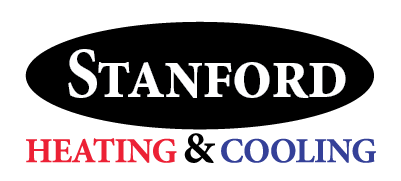
With adequate maintenance, your air conditioner can run for 15 years or greater. But even the best maintained air conditioner will need to be removed eventually.
When you’re starting to plan for air conditioning installation in Bloomfield, we know that cost is number one on your list of questions. The good news is that buying a new air conditioner could be more affordable than you think it is, thanks to rebates, our special offers and financing for qualified customers. You’ll also enjoy enhanced energy efficiency, which will likely pay off over its life span through cheaper electricity bills.
Here’s what to prepare for when you’re replacing your air conditioner.
When You Should Replace Your Air Conditioner
Knowing when to repair or replace your air conditioner can be hard. Here’s what our pros advise.
Replace
- Your air conditioner is past 10 years old. While some might run longer, many air conditioners last for around 15 years with annual maintenance. We advise planning for air conditioning replacement close to the 10-year point. Even if you get a new one when it’s only a decade old, the U.S. Department of Energy says this swap could save you 20-40% on cooling bills.
- You’ve skipped regular maintenance for many years. Just like a car, your cooling system requires routine air conditioning maintenance. Overlooking this essential service can cause lower efficiency, more frequent repairs and even a reduced life span.
- Your air conditioner has to have frequent or pricey repairs. Needing air conditioning repair is often the consequence of not doing tune-ups But as your air conditioner gets older it’s more likely to suffer a big malfunction. When repairs are greater than half the cost of a new air conditioner, you should get a new one.
- Your residence is uncomfortable. If your home feels too humid or you’re dealing with hot and cold spots in certain spaces, your air conditioner might be struggling to keep up. This is a clue it’s time to replace it.
- Your energy bills are expensive. Your air conditioner becomes less efficient as it ages. As a result, it could need to run more frequently or longer to keep your house at your desired temperature. Newer air conditioners have the latest energy-efficient technology to keep your residence comfortable and utility bills down.
- Your air conditioner uses R-22 refrigerant. If your air conditioner was purchased before 2010, there’s a high likelihood it has Freon. Also referred to as R-22, this refrigerant is no longer being made as a result of its damaging effects on the environment. You can keep using your air conditioner, but if it were to have a refrigerant leak, fixing that would be extremely expensive. This is since R-22 is only available in limited, recycled portions.
Repair
- Your air conditioner is less than 10 years old. If your air conditioner is newer, it’s best to repair it.
- Repairs are infrequent or inexpensive. The wisest way to prevent unanticipated repairs is to have yearly work scheduled. But when repairs are only needed every so often or are economical, repair your air conditioner.
- Your air conditioner has a valid warranty. Most air conditioners include a 5- to 10-year limited warranty that usually covers the compressor. Your exact warranty length is determined by your manufacturer, but it offers valuable protection in the event of a big failure. If your air conditioner is under warranty, we advise fixing it.
General Estimate of Air Conditioner Cost
Most homeowners spend around $4,631 on a new air conditioner, per national averages compiled by HomeGuide. Air conditioner cost averages often range from $3,350 to $5,912, but your precise cost {might|could|may] vary.
There are a few aspects that impact your total cost, like:
- The air conditioner model you choose, as more energy-efficient ones are pricier.
- The size your space needs.
- If you need to install new ductwork, which can be needed if your ductwork is aging or separated.
We offer free estimates at Stanford Heating & Cooling so you can be confident you’re getting a fantastic deal. And with our wide range of air conditioners, there’s an energy-efficient model that fits just about any budget.
Air Conditioner Sizing
Air conditioner size is essential. A system that’s too small will have difficulty keeping your residence cool. And one that’s too large might turn on and off too many times, or short cycle. This behavior can drive up your utility expenses and wear your air conditioner out prematurely. This might also create temperature inconsistencies and make your home feel less comfortable.
At Stanford Heating & Cooling, our techs have many years of experience in properly sizing and installing the right air conditioner for your home. The size you need depends on how big your residence is, plus a couple other things. Some of the most standard sizes include:
- 2 ton, which cools up to 1,000 square feet
- 3 ton, which cools up to 1,600 square feet
- 4 ton, which cools up to 1,900 square feet
- 5 ton, which cools more than 2,000 square feet
Other considerations that can affect air conditioner size are:
- The climate in Bloomfield.
- Ductwork quality and age.
- How many windows your home has and the style, as large or picture windows may be lower efficiency.
- If your home receives more sun or shade.
- Insulation quality and concentration.
- How many people are in your household.
SEER Ratings
Your air conditioner’s efficiency is impacted by its SEER, or Seasonal Energy Efficiency Rating. This rating measures how efficiently it consumes electricity to create cooling. The higher the number, the more efficient the air conditioner is.
When you’re getting a new air conditioner, it’s crucial to know:
- Older air conditioners are classified around 8-9 SEER.
- Updated air conditioners start at 13 SEER. Ones installed in the southwest and southeast must be a minimum of 14 SEER due to U.S. Department of Energy requirements. As of 2017, these SEER rating requirements have saved homeowners trillions of dollars.
- ENERGY STAR®-certified air conditioners begin at 14.5 SEER.
- Higher SEER-rated air conditioners include more features to help you save more. These features may entail variable-speed cooling. Instead of operating at 100% constantly, these air conditioners can adjust blower speeds customized for your cooling preferences. This results in quieter and more energy-efficient comfort. While an air conditioner with a better SEER rating is typically more expensive, it could be eligible for valuable rebates. And the energy savings over its life span could help it pay for itself.
Schedule Your Air Conditioning Installation with Stanford Heating & Cooling Today
When you’re preparing for air conditioning replacement, the company who puts it in is just as important as the model you select. Stanford Heating & Cooling is one of the top names for air conditioning installation in Bloomfield. From helping you select the ideal solution for your home to discussing financing options to professional installation, collaborating with our pros is a breeze. Contact us at 812-825-8695 to start now!

